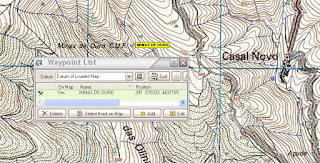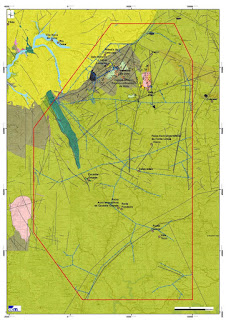An Abandoned gold mining area in Portugal: environmental impacts and human health risks
An Abandoned gold mining area in Portugal: environmental impacts and human health risks
The old mine of Escádia Grande, located 11 kms south of Góis, Coimbra district, central Portugal was exploited for Au and Ag and was active at the midle of the 1900. Between 1939 and 1952 about 42878 tonnes of material were treated. The mineralized quartz veins consist of quartz, arsenopyrite, pyrite, chalcopyrite, galena, sphalerite, gold and argentite. The Góis relief is extremely vigorous, with the high altitudes reaching 1000 meters and the lowest 200 meters. The mine dumps were deposited close to the stream and a river beach was created 2 km downstream.
The waters have circum-neutral pH values and contained up to 284 μg/L of As. The As concentrations decrease to downstream of mine dumps. The geochemical modelling carried out by Phreeq C demonstrated that As mainly occurs in the pentavalent form. The As concentration is attenuated by the iron-(hydro)-oxides adsorption upstream, close to mine dumps. However, the transport of the tailing material along the stream to the river beach still currently occurs. The stream sediments and soils close to the old mining area also have high concentrations of As, up to 3140 mg/kg and 5940 mg/kg, respectively. The stream sediments have As concentrations up to 45 times higher than the limit of the sediment guideline values (NWQMS, 2000). The soils have As concentrations 27 times higher the Foregs Geochemical Atlas of Europe.
The human health risks associated with the use of a river beach, stream sediments and soils for recreational proposes were assessed. The use of the river beach causes a cancer risk (4.48×10-6) that exceeds the USEPA limit, mainly due to the arsenic exposure. The stream sediments and soils also have high non-carcinogenic effects (2.76 and 4.78, respectively) for childrens, mainly due to the arsenic exposure, by ingestion pathway. Moreover, non-cancer risk for adults (1.13) is also unacceptable according to the USEPA limits, mainly due to the arsenic exposure in soils. Consequently, the arsenic constitutes a main threat to the human health in this old mining area.


Comentários
Enviar um comentário